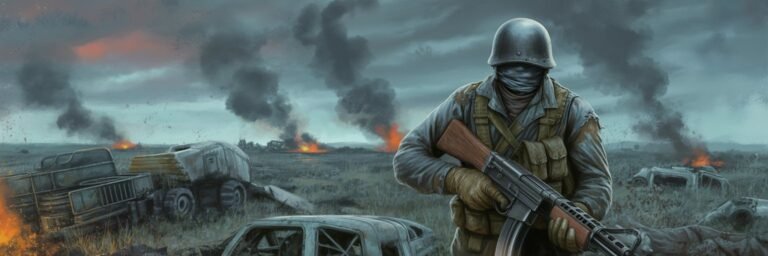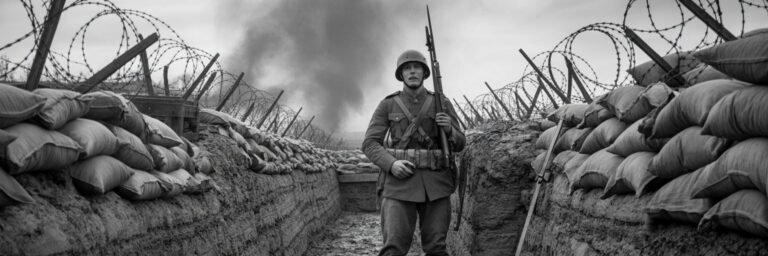INTRODUCTION
Step into any scholarly setting or an insightful discussion on human interaction, and the drumbeat of warfare’s crucial role is impossible to miss. War, bloody and brutal as it may be, is an intrinsically human phenomenon, dating back to our earliest records of civilization. From sharpened stones to deadly drones, the evolution of weaponry traverses the jagged timeline of human innovation and ingenuity. This article puts a magnifying glass to the turbulent history of warfare and weapons, unraveling mysteries, interpreting theories, and exploring the cultural significance and modern investigations surrounding this topic.
HISTORICAL BACKGROUND
Warfare has irrevocably shaped human history, catalyzing change and development. Early nomadic tribes fought with crude weaponry—stones, spears, clubs—in territorial battles or disputes over resources. These rudimentary implements morphed into sophisticated tools of destruction with the dawn of civilization around 3,000 B.C., marked by items like the bronze Khopesh from ancient Egypt or the Mesopotamian chariot.
The Greeks and Romans heralded a new era with formations like the phalanx and weapons such as the pilum. Battles like Marathon and Cannae echo through the corridors of antiquity, testaments of strategic warfare. With the fall of Rome, Europe devolved into feudal factions, and the blade, high and mighty, rose in symbolic and martial importance. Knights with swords and shields became iconic figures, their power etched into the annals of history.
Asian warfare was equally intricate, from Chinese gunpowder and crossbows to the Samurai’s katana in Japan. The Mughals of India introduced artillery, while the Ottomans controlled battlefields with their Janissary corps and unique weapons like the yatagan.
THEORIES AND INTERPRETATIONS
Scholars have often waxed lyrical over the ‘why’ of war. One of the dominant theories propounded by political scientist Quincy Wright suggests that war originates from six structural elements: human nature, culture, sociopolitical organization, diplomacy, technology, and the international system itself.
Others highlight economic gain, territorial acquisition, and the pursuit of power as warfare’s root causes. Theory and interpretation expand further when we examine the weapons. The noted historian Richard Overy offers a notable theory, observing a distinct link between the sophistication of weapons and the perceived nobility of warfare until the 20th century. The role of industrialization in warfare, particularly apparent during the World Wars, also warrants mention, as it brought about mechanized warfare and immense loss of life.
MYSTERIES AND CONTROVERSIES
Despite extensive historical evidence and scholarly research, many mysteries and controversies remain. One of the enduring enigmas is the Mahabharata war from Indian antiquity, which some scholars argue contained descriptions of nuclear warfare with allegorical references to “divine weapons” that decimated entire cities. However, scientific proof is lacking, making polarizing interpretations remain afloat.
Likewise, the Trojan War—popularized through Homer’s ‘Iliad’—is shrouded in mystery. Some argue whether it even happened or if the legendary Achaeans and Trojans existed.
SYMBOLISM AND CULTURAL SIGNIFICANCE
Weapons and warfare hold immense symbolic and cultural significance. The Japanese katana, for example, embodied the Samurai spirit, symbolizing honor, precision, and grace. European knights held swords in high esteem, correlations of their religious and chivalric codes.
In Hindu mythology, different deities wield distinct weapons—Lord Shiva’s trident signifying sovereignty over the world, while Goddess Durga’s multiple weapons underline her combative prowess against evil. Ancient Celtic warriors reportedly believed that their weapons held spiritual energies, enhancing their martial effectiveness.
MODERN INVESTIGATIONS
Modern investigations into ancient warfare and weaponry focus on archeological evidence, textual resources, and emerging technologies like 3D modeling. Battlefield archaeology has unveiled significant insights into conflicts, like Waterloo and the English Civil War. The Roman siege of Masada and the Battle of Kadesh have been brought to life using computer models that mimic ancient warfare techniques.
Furthermore, linguistic studies and examinations of seminal war-texts, such as Sun Tzu’s ‘The Art of War’ or Clausewitz’s ‘On War,’ provide insightful perspectives on strategy and philosophy of ancient martial conduct.
LEGACY AND CONCLUSION
In a world where peace is now highly prized, the legacy of warfare and the evolution of weaponry offer us invaluable lessons. As we harness technology to prevent strife, understanding how war has shaped our history, how weaponry has developed over millennia, and the deeper implications of both, is essential.
Warfare transformed societal structures, motivated technological advancement, inspired art, and buried deep-rooted symbolism within our cultural fabric. Simultaneously, weapons, as tangible manifestations of conflict, reflect our human potential for invention alongside our capacity for destruction.
While warfare and weaponry remain contentious subjects, they open avenues for reflection, ensuring that we humbly remember our past while we collectively shape our future.


